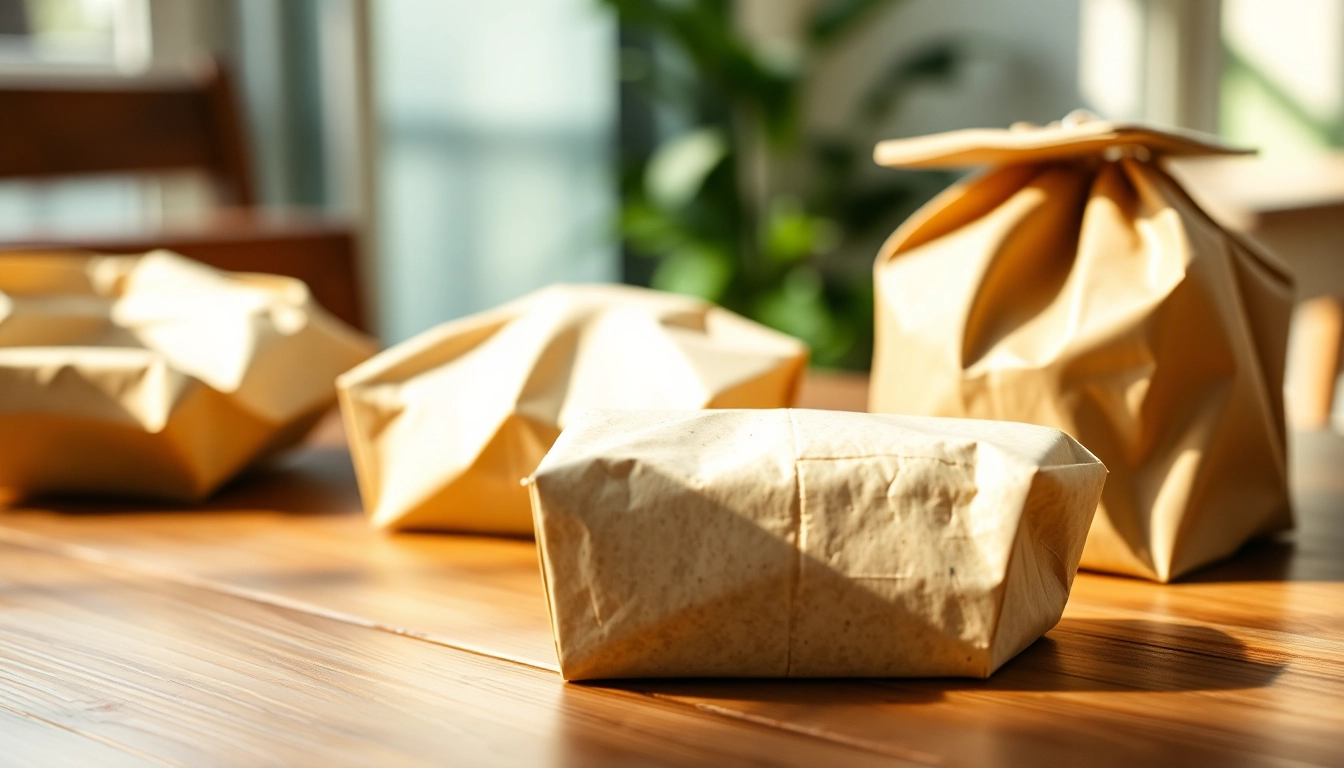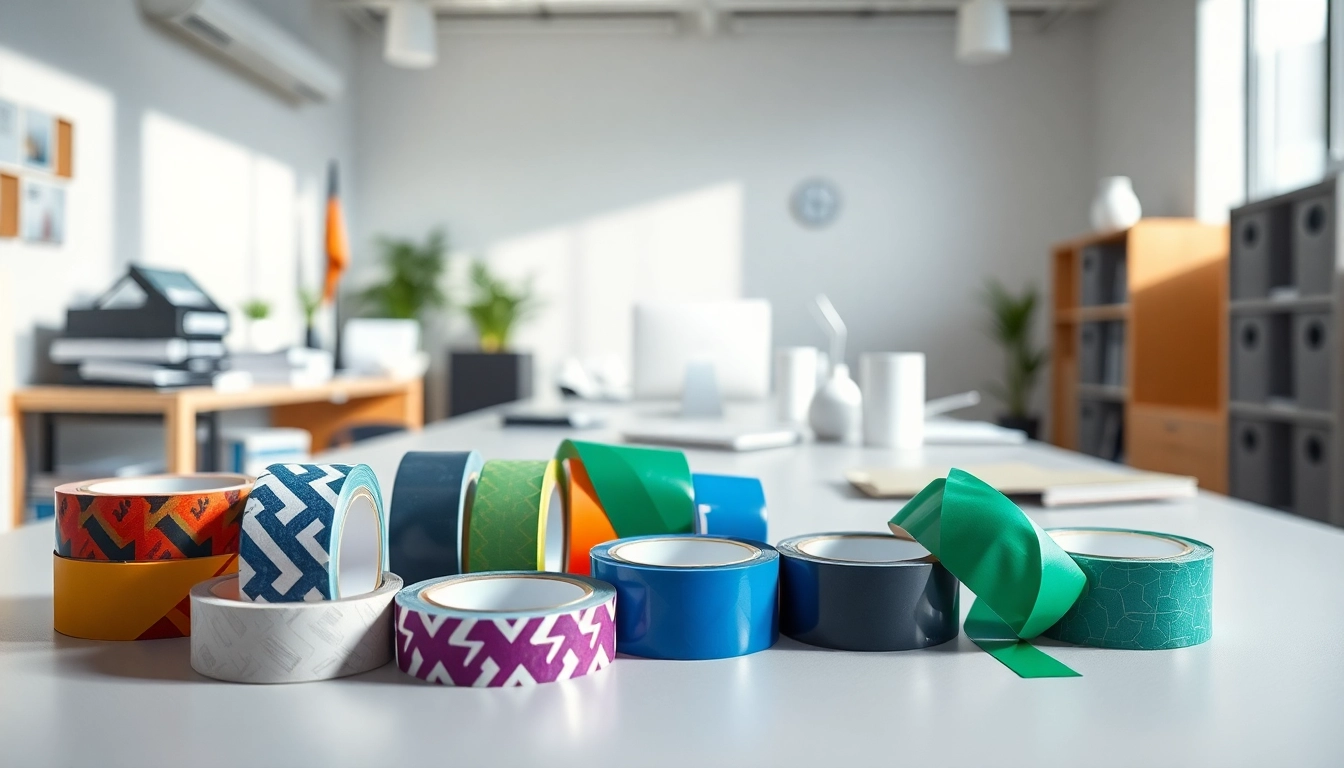Understanding Pulp Packaging
What is Pulp Packaging?
Pulp packaging refers to the innovative use of fiber-based materials to create environmentally friendly packing solutions. It is derived directly from waste products, primarily recycled paper, cardboard, and other natural fibers such as sugarcane, wheat straw, and bamboo. The process involves turning these fibrous materials into pulp, which can be formed into a variety of shapes and products for protective packaging needs. As industries move towards more sustainable practices, pulp packaging stands out for its minimal environmental impact.
The Materials Behind Molded Pulp
Molded pulp packaging is typically made from a blend of various fibrous materials, enabling manufacturers to tailor the packaging solutions to their specific needs. The predominant materials include:
- Recycled Paper and Cardboard: These are the most common sources, sourced from post-consumer waste to reduce landfill impact.
- Natural Fibers: Materials such as bagasse from sugarcane, bamboo, and wheat straw add strength and biodegradable properties to the packaging.
- Composite Materials: These may include blends of different fibers to achieve enhanced performance characteristics, such as increased moisture resistance or varying textures.
The choice of material not only impacts the physical properties of the packaging but also influences its sustainability credentials, ensuring it is 100% biodegradable or recyclable depending on consumer needs and regulatory guidelines.
How Pulp Packaging is Made
The production of molded pulp packaging follows a sequence of well-defined steps:
- Preparation of Raw Materials: This involves the collection and shredding of recycled paper and other natural fibers into smaller pieces, which facilitate easier processing.
- Pulping: In this step, the shredded materials are mixed with water to create a slurry. Various additives can be included to enhance performance features, such as anti-microbial properties or coloration.
- Molding: The pulp slurry is then placed into molds that shape the material into specified designs suitable for the intended packaging function.
- Drying: After molding, the formed shapes are dried to solidify their structure and ensure durability during transportation and storage.
- Finishing: This may involve additional processing steps such as cutting, trimming, or surface treatment to meet specific product requirements.
The entire process emphasizes sustainability and efficiency, with many manufacturers adopting closed-loop systems that minimize waste and optimize resource use.
Benefits of Using Pulp Packaging
Environmental Advantages
Molded pulp packaging brings numerous ecological benefits that are increasingly vital for brands aiming to align with sustainability goals:
- Biodegradability: Being made from organic materials, pulp packaging is fully biodegradable and compostable, reducing the long-term environmental footprint on landfills.
- Recyclability: Post-use, many products can be recycled again into new packaging materials, promoting a circular economy.
- Reduction of Carbon Footprint: Utilizing recycled materials for production considerably lowers greenhouse gas emissions associated with traditional plastic packaging.
Cost-Effective Solutions
Despite its sustainable advantages, molded pulp packaging can also be economically beneficial:
- Affordable Raw Materials: Using recycled fibers often proves less expensive than sourcing new materials, reflecting in reduced costs for manufacturers.
- Low Shipping Costs: Molded pulp is lightweight and can be designed for stackability, reducing shipping expenses and maximizing transportation efficiency.
- Waste Reduction: Many companies can save on disposal costs as pulp packaging decomposes naturally without contributing to landfill waste, offering a cost balance over time.
Protective Qualities of Pulp Packaging
Another significant advantage of pulp packaging lies in its protective capabilities:
- Shock Absorption: The cushioning effect of molded pulp makes it ideal for packaging fragile items, safeguarding against damages during transit.
- Temperature Control: Depending on the formulation, some pulp materials can offer moderate thermal insulation, protecting products sensitive to temperature extremes.
- Customizable Designs: Manufacturers can create tailored inserts or containers that fit specific products snugly, further enhancing protection.
Pulp Packaging Applications
Industries Benefiting from Pulp Packaging
The versatility of pulp packaging has led to its adoption across various industries, including:
- Electronics: Companies shipping delicate electronics often use molded pulp for protective inserts that safeguard devices from shocks.
- Food and Beverage: Its biodegradable nature makes it suitable for food trays and containers offering both safety and sustainability.
- Cosmetics: Many cosmetic brands utilize molded pulp packaging for decorative yet functional inserts that enhance the unboxing experience.
- Automotive: The automotive industry uses molded pulp to package various components due to their cushioning qualities and customizability.
Custom Solutions for Unique Products
One of the standout features of molded pulp packaging is its ability to be customized:
Manufacturers can work closely with clients to create unique designs that accommodate specific product shapes, sizes, and characteristics. This customization not only enhances product presentation but also ensures products are securely held in place during shipping. Custom molds can lead to innovations that better serve niche markets. For example, companies might develop intricate designs for high-end electronics or health care supplies, establishing a stronger brand identity through packaging alone.
Case Studies of Successful Implementation
Real-life examples highlight the transition many companies have made to pulp packaging:
- Apple Inc.: Apple has implemented molded pulp packaging in recent years, aligning their product packaging with their commitment to sustainability while maintaining their premium brand aesthetics.
- Earthpack: Specializing in eco-friendly packaging, Earthpack has seen a significant increase in demand for molded pulp products, showcasing how companies focusing on organic packaging gain competitive market advantages.
- PepsiCo: As part of its sustainability efforts, PepsiCo has conducted trials using molded pulp trays for their snack products, achieving reduced carbon emissions related to packaging while appealing to environmentally conscious consumers.
Challenges and Considerations
Common Misconceptions about Pulp Packaging
Despite the clear advantages, several misconceptions still exist:
- Durability Concerns: Some believe pulp packaging lacks the robustness needed for heavy products; however, advancements in material composition have greatly improved durability.
- Aesthetics: There is a notion that molded pulp is plain and unattractive, but many brands now leverage embossed finishes, colors, and designs creating visually appealing packaging.
- Cost Comparisons: Although the initial cost might seem higher than plastic options, when considering environmental costs and brand value, molded pulp offers a competitive solution.
Factors Affecting Performance
The performance of pulp packaging can be influenced by several factors:
- Moisture Sensitivity: While advancements have been made, certain molded pulp products may absorb moisture, which can compromise their structural integrity. Proper treatment and coatings can mitigate this issue.
- Impact Resistance: The design and thickness of molded pulp affect how well it absorbs shock. Tailored designs ensure optimum performance for specific applications.
- Environmental Conditions: Conditions during storage and transport, such as humidity and temperature fluctuations, can impact pulp packaging, making testing critical for compliance with performance standards.
Shipping and Handling Concerns
Shipping molded pulp presents some challenges that need to be addressed:
- Weight Considerations: Although lighter than traditional materials, density varies based on the design. Shipping costs could be higher if products stack inefficiently.
- Stackability: Designs need to be optimized to ensure maximal use of space during transport, allowing for efficient bulk shipping.
- Compatibility with Existing Systems: Businesses need to ensure that the implementation of molded pulp solutions integrates well with their current packaging and shipping processes.
The Future of Pulp Packaging
Innovations in Pulp Packaging Technology
As the market for packaging continues to evolve, so too does the technology behind pulp packaging:
- Smart Packaging Integrations: Companies are exploring ways to include NFC or QR codes within pulp material, leading to interactive packaging that engages consumers.
- Advanced Coating Options: New biodegradable coatings enhance durability and resistance to moisture without losing eco-friendliness.
- Expansion of Material Sources: Research into alternative fibrous materials, such as agricultural byproducts, can diversify the supply chain and enhance sustainability.
Market Trends and Consumer Preferences
Consumer behavior is shifting towards sustainable practices:
Today’s environmentally aware consumers are increasingly opting for products packaged in eco-friendly materials. Surveys indicate a willingness to pay more for sustainably packaged goods, pushing companies to consider how packaging impacts brand loyalty and purchasing decisions. This shift is also evident in competitive branding; companies that emphasize sustainability become more appealing in markets saturated with traditional packaging solutions.
Getting Started with Pulp Packaging
Businesses interested in transitioning to pulp packaging can take salient steps:
- Evaluate Existing Packaging: Identify areas where molded pulp could enhance current packaging efforts, both environmentally and logistically.
- Partner with Manufacturers: Collaborate with molded pulp manufacturers who can provide custom solutions tailored to specific product lines.
- Test and Iterate: Pilot programs allow businesses to test molded pulp designs, gauge responsiveness from customers, and measure performance metrics.
- Monitor Supply Chains: Ensure that sourcing of materials remains ethical and sustainable, supporting the broader environmental goals of the business.
With careful planning and execution, transitioning to pulp packaging not only aligns with consumer expectations but also revolutionizes how products are presented and protected in today’s market.



